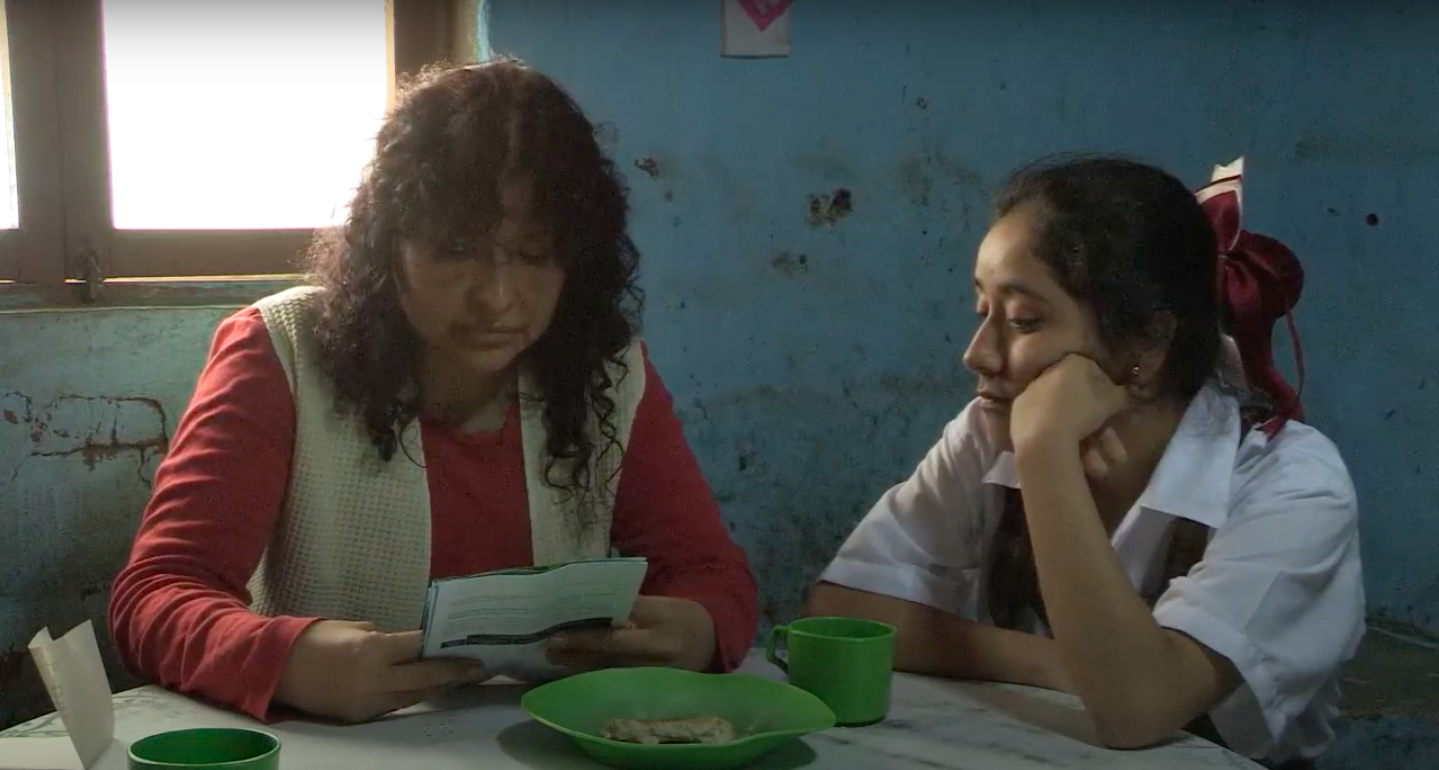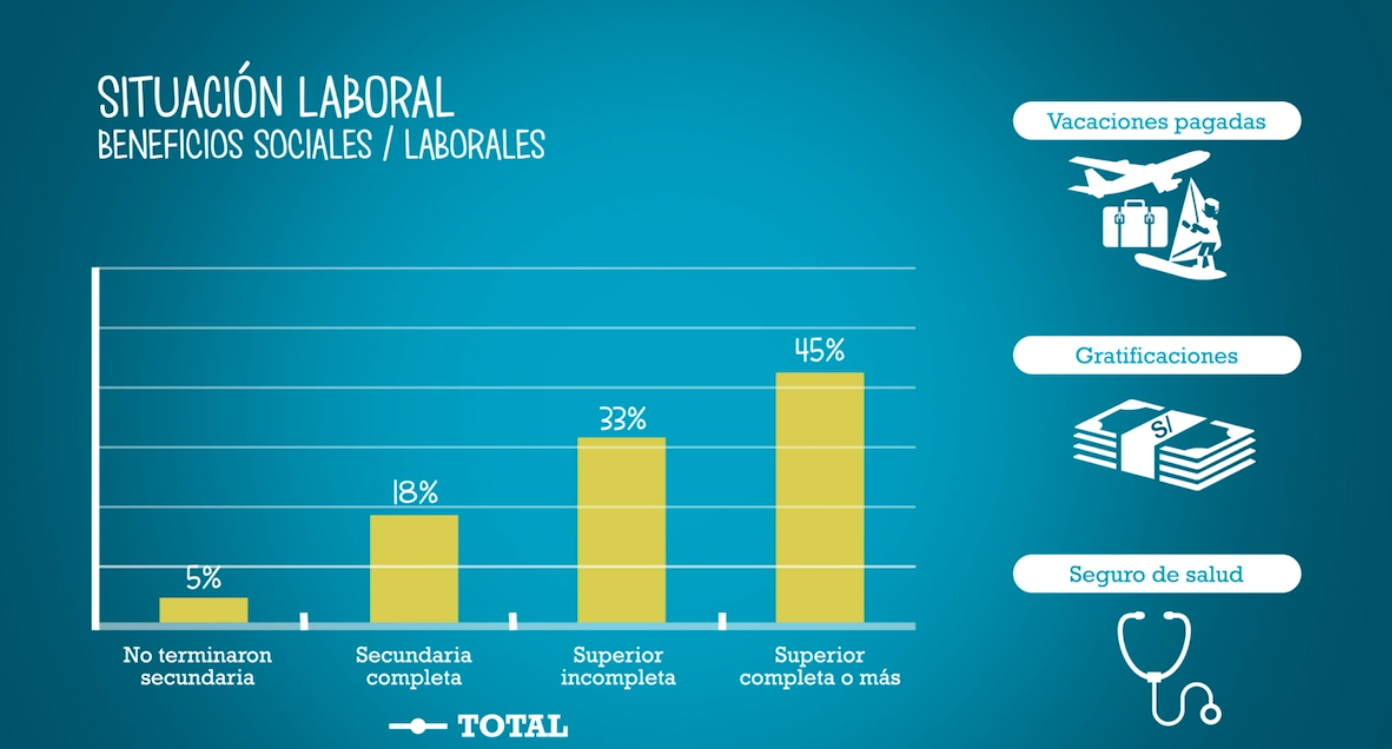Can a Telenovela Help Kids Stay in School during COVID-19?

A still from the telenovela “Decidiendo para un Futuro Mejor” (Choosing a Better Future).
In late 2020, as part of Peru’s national mobilization for educational continuity during the COVID-19 pandemic, the country’s Ministry of Education started airing episodes of a telanovela “Decidiendo para un Futuro Mejor” (Choosing a Better Future), on national TV, embedded in the remote education lessons. But the telanovela was a little unusual—it was conceived and tested by researchers Oswaldo Molina, Christopher Neilson, and Francisco Gallego, with the Ministry’s in-house lab, MinedLAB, and with IPA and J-PAL a few years before, and the data suggested it might be just what the country needed during the COVID-19 school closures.
COVID-19 can have a permanent impact on the future life of students. After Ebola school closures in West Africa in 2014-2016 studies in Liberia and Sierra Leone, found that 25 and 13 percent, respectively, of students, did not return to schools when they re-opened. The main reason was financial—the inability to pay for school fees and the need to generate income at home. Another study in Sierra Leone found that girls between 12 and 17 years-old were more vulnerable—50 percent did not return, and financial reasons caused an 8 percent increase in school dropouts.
So, what actions can be taken to mitigate the risk of students in Peru dropping out?
As COVID-19 hit Peru in March 2020, the government made the tough decision to close all schools and in-person classes. Since then, it has put in place a tremendous effort to provide the 8 million students out of school with all the necessary materials to keep learning. The Ministry of Education (MoE)’s remote education strategy, “Aprendo en Casa” (AeC), (“I Learn at Home”) is a combination strategy, providing educational services through the internet, TV, and radio. Economists would call it a supply-side-oriented strategy, but on the demand-side, the families, access to technology and resources is not equal for all students. Also, social distancing and economic disruptions have increased the family and financial pressures, placing students at higher risk of not returning to schools when they re-open.
There is a consistent body of evidence of demand-side policies showing that providing information about returns on education—how much more people will earn later if they continue in school—can effectively inform students and parents on the value of education.1 The theory is just one of the barriers might simply be knowledge, and indeed in 2015, a team of researchers mentioned above,2 with IPA, J-PAL and the MoE’s Policy Innovation Lab (MineduLAB) developed and evaluated a cost-effective intervention that provided students with information on the returns to education to reduce students dropouts.

The RCT, implemented in more than 2,850 schools across the country, showed very promising results. Preliminary results showed an adjustment of students’ and parents’ perceptions about the returns of education and consequently a reduction in dropout rates in both urban and rural areas. A year later, the Ministry of Education decided to expand the intervention to 2,001 secondary schools with full-day school hours in urban areas.
With COVID-19 school closures creating the urgent need for policies to keep students engaged, IPA and the World Bank worked together to update the information on the videos with the most recent data regarding returns to education and scholarship opportunities. In collaboration with the Ministry, the videos were adapted to the AeC’s TV programming format and broadcasted nationwide. But obviously this time in a different setting and uncontrolled environment, the Ministry had no way of knowing if the videos were working.
To assess whether and how the new program might be working, with the MineduLAB team, we used an encouragement design to send SMS messages and phone calls to parents in randomly selected schools advising them about the day the videos would be broadcast and what the content was about. To optimize resources, we decided to prioritize urban schools and schools where the greatest percentage of students drop out,3 and we will measure if doing that changed dropout rates for the 2020-2021 period.4
What's the takeaway from this experience?
First, data collected during one emergency can help others when facing a different crisis. The data collected during the Ebola pandemic helped both researchers and policy-makers to anticipate what challenges might arise during COVID-19, and we hope data that is being collected during COVID-19 will also help provide guidance for any future crisis.
Second, having existing evidence to draw on can help during a crisis. “Decidiendo por un Futuro Mejor” was developed and tested before COVID-19 but, when the need arose, it provided Minedu a tool to start with when facing the challenge of mitigating drop-out rates.
Third, administrative data is an invaluable tool when you still need to understand how your policy response is affecting your target population and how to improve, especially in a crisis setting that brings an additional set of challenges. Administrative data will allow the MoE to understand better how the videos broadcasted nationwide were able to change the lives of their students.
And now, let’s stay tuned for the results!
1. Dinkelman & Martínez, 2014; Jensen 2010; Nguyen 2008; Hastings & Zimmerman, 2015.
2. Francisco Gallego (Universidad Católica de Chile, Scientific Director of J-PAL LAC), Oswaldo Molina (Universidad del Pacífico), Christopher Neilson (Princeton University, J-PAL Affiliate).
3. The evaluation focuses on schools in urban areas because they have higher telephone coverage rates. Schools with higher dropout rates are defined as schools with the two highest quintiles of dropout according to SIAGIE 2018-2019, restricting the data to 5th grade of primary and 4thgrade of secondary school.
4. Enrolment data for 2021 will be available in the second semester of the year.
In the video below, researchers Francisco Gallego, Oswaldo Molina, and Christopher Neilson discuss their prior study findings.












